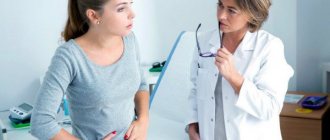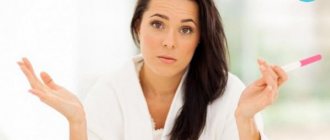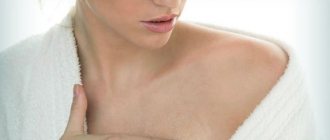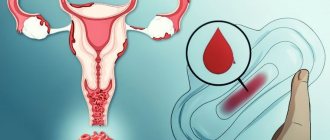- Why did acne appear in the middle of the cycle, reasons?
- Acne on the face in the middle of the cycle in adult women
- Diagnosis and signs of acne on the face in the middle of the cycle
- Location of hormonal acne mid-cycle
- Acne on the face in the middle of the cycle, prevention
- Mid-cycle acne: treatment
- Medications for hormonal acne on the face in the middle of the cycle
Many women in the middle of their cycle, due to hormonal problems at a high or medium level, may have problems associated with the appearance of acne on the face during this period of time. Proper skin care before, during and after the menstrual cycle can help get rid of acne. In the article we We will also find out some of the main reasons for the appearance of such problems in the body and skin. We will also determine methods for treating and preventing such skin rashes.
Why did acne appear in the middle of the cycle, reasons?
Hormones are known to play an important role in the development of acne, especially in the middle of the cycle. Fact: Hormonal acne begins in the adrenarche phase - the period at the beginning of puberty when the adrenal glands begin to secrete androgenic hormones.
These hormones lead to excessive secretion of sebum in the sebaceous glands, leading to clogged pores, which is one of the main causes of any type of acne.
In girls, at the onset of puberty, the ovaries produce estrogen, as well as androgens such as testosterone. The testosterone hormone further increases sebum production. As a result, inflammatory hormonal acne is very common during this mid-cycle period. This form of acne is characterized by papules and pustules, and most often they appear on the chin, forehead and cheeks, where the sebaceous glands are most concentrated.
Hormonal acne: the main reasons for the appearance of acne in the middle of the cycle:
The main causes of oil secretion and acne in women is the excess production of male sex hormones, also called androgens. Testosterone is the main culprit that is responsible for the increase in oil secretion.
Skin conditions worsen and mid-cycle acne increases when levels of female sex hormones, especially estrogen, fall. Estrogen balances male sex hormones in the skin, and without a healthy balance, problems arise.
The most well-known androgen is testosterone.
Testosterone causes oil to form in the skin.
Why might you have high testosterone levels?
You may also have high testosterone levels if you have diabetes or insulin resistance, because when the body produces insulin, the ovaries produce testosterone. This is a very simple but very destructive process for your skin and body in general.
For women with chronically low estrogen, hormonal acne during mid-cycle is often a chronically persistent problem.
In women with relatively healthy hormonal systems, low estrogen can still be a problem. This is because estrogen levels drop from the middle to the end of each menstrual cycle. Having such low estrogen levels during this time can lead to new pimples breaking out each month.
Because menopause significantly reduces estrogen levels—to almost zero—it's also the main reason why postmenopausal women may see the reappearance of hormonal acne after decades of acne-free skin.
Methods to combat acne during ovulation
Acne during ovulation can be treated with medications, topical products, a special diet, and traditional methods. Let's take a closer look at each of the methods.
Drug therapy
It is used in cases where acne during ovulation appears as a result of hormonal disorders or surges.
In such a situation, contraceptives come to the rescue:
- tablets (oral contraceptives);
- special plasters;
- injections.
Contraceptives in tablet, injection form or in the form of a patch stabilize hormonal levels, due to which a woman’s skin problems in the form of acne disappear, since ovulation does not occur during hormone replacement therapy.
Contraception should only be used in cases where the girl is not planning a pregnancy. If this is in the plans, then you should not use any medications, since acne will go away on its own within a few weeks after conception as hormonal levels stabilize.
Acne on the face in the middle of the cycle in adult women
Poll: When did your acne appear? (Number of votes: 4295)
I've been suffering all my life
It's been a couple of years now
About a few months
Recently
To vote, click on the desired answer. results
In adult women, mid-cycle hormonal acne tends to concentrate most frequently on the lower part of the face, such as the lower jawline, chin, cheeks, or neck. Additionally, these lesions are also more painful and inflammatory or cystic in the shape and appearance of the acne.
These types of acne are again associated with hormonal stimulation, which leads to increased sensitivity of the sebaceous glands. Moreover, hormonal acne and acne outbreaks are closely related to the menstrual cycle. In most adult women suffering from hormonal acne, acne outbreaks most often resolve during the premenstrual phase, although for some Women also experience acne mid-cycle or during ovulation.
The most important reasons for the appearance of acne before menstruation
Stress, birth control pills, and other factors also stimulate the adrenal glands to produce more androgen hormones, which stimulate facial acne.
Common spawn locations
During the ovulation phase, acne usually appears on the forehead and chin. Very rarely, near the eyes.
- On the forehead. Mostly the rash appears on days 12-16. During this period, hormonal fluctuations are most noticeable, as immunity decreases.
- In the chin area. Hormonal changes are also a cause.
- On the cheeks. During ovulation, a rash rarely appears in this area, but sometimes occurs. This is facilitated by clogging of the sebaceous glands.
Diagnosis and signs of acne on the face in the middle of the cycle
Not all types of acne are related to hormones. Therefore, dermatologists should take a complete menstrual history when acne is present in adult women. It is necessary to find out whether periods are regular and whether acne is actually related to the menstrual cycle.
Hormonal treatment is necessary when the patient has acne along with abnormal hair growth on the chin. Obesity, infertility, irregular periods and alopecia of the scalp are also indicative of full hormonal load as these are all signs of virilization (development of male physical characteristics due to excess production of androgens) .
Useful tips
It is quite difficult to unequivocally answer the question of how to prevent acne from appearing . Each organism has individual characteristics. If it is not possible to conduct an examination, then you can familiarize yourself with some recommendations:
- Don't touch your face with dirty hands.
- New growths should not be squeezed out.
- You need to reconsider your diet.
- It is advisable to take vitamin complexes.
- Salicylic acid has antiseptic properties, so it is necessary to regularly wipe the skin with its solution.
But these tips do not solve the problem . To prevent inflammatory skin processes, it is better to seek help from a cosmetologist who will prescribe the necessary medications.
Acne on the face in the middle of the cycle, prevention
Step 1
Wash your face with a gentle antibacterial soap or mild gel face lotion every morning and night University of Maryland Medical Center says if you wash your face more than twice a day or use a harsh cleansing product, it can make acne worse University Medical Center The State of Maryland also recommends using only facial products and makeup that do not contain oils and o-based products, which means these products will not clog pores and do not contain greasy oils.
Step 2
Talk to your doctor about taking hormonal birth control pills. According to the U.S. Department of Health and Human Services, birth control pills may help reduce acne, especially for women who are prone to breakouts primarily around and in the middle of their menstrual cycles. A certain type of birth control pill reduces the amount of oil in skin glands and reduces the androgen hormone, which causes acne. However, it is worth being aware of the side effects associated with taking birth control pills, so your doctor should help you determine if they are right for you in your case of problems.
What to do when you get pimples before your period!
Step 3
Use topical medications to prevent and treat acne. Two commonly used medications are retinoids and benzoyl peroxide. The University of Maryland Medical Center explains that retinoids, such as Retin-A cream, can help unclog pores so acne won't form in the future.
Step 4.
Take a vitamin supplement regularly, as prescribed by your healthcare professional, to prevent acne during your menstrual cycle. The University of Maryland Medical Center says the mineral zinc may reduce acne, while the amino acid L-carnitine may improve side effects. , which sometimes occurs with retinoid acne. These supplements, when taken in specific doses recommended by your doctor, can improve the overall appearance of your skin, especially during your menstrual cycle.
Is it possible to avoid rashes before menstruation?
Women can be prescribed COCs9, but oral contraceptives themselves are not an anti-acne agent. Combination therapy with the use of drugs that affect the pathogenesis of acne is necessary. These include azelaic acid9. It has anti-inflammatory, antioxidant, andandrogenic, antimicrobial, antikeratinizing effects2.
Azelaic acid is the main active ingredient of Azelik® gel. The base also contains excipients - the emollient squalane, which softens the skin, dimethicone and methylpyrrolidone, which improve the penetration of azelaic acid7,1.
*acne
Mid-cycle acne: treatment
The best thing you can do for hormonal acne is, first, find out with the help of your doctor what your main acne problem is, and, second, follow all the basic recommendations from your doctor regarding the mid-cycle facial acne treatment process.
In general, the hormonal dysregulation that leads to acne can be broken down into several broad categories. Depending on the category of the condition, there will also be differences in how you treat mid-cycle acne:
- high testosterone from PCOS (especially overweight and insulin-resistant type of PCOS);
- low estrogen with low body fat, chronically restricted or living in an energy deficit;
- low estrogen from menopause;
- high progesterone from a general hormone imbalance, possibly associated with PMS;
- any of the above conditions worsened by stress or hypothyroidism.
Preventive measures
Acne during egg maturation will bother a woman much less if she follows the basic simple rules.
Proper diet
Healthy skin is the result of a balanced diet. A woman who dreams of beautiful and clear skin should avoid consuming the following products:
- strong coffee and tea;
- sweet dishes, baked goods;
- fat meat;
- fried, spicy foods.
You need to include the following products in your diet:
- berries, fruits, vegetables;
- lean meat and fish;
- dried fruits, nuts;
- dairy and fermented milk products;
- eggs;
Proper nutrition is the main assistant in the fight against skin imperfections
Rejection of bad habits
It's no secret that smoking has a detrimental effect on a person. The body, under the influence of tobacco smoke, reacts more acutely to all changes, including hormonal ones. This is why you can often see numerous pimples on the faces of smokers. Women who care about the cleanliness and health of their skin should give up all bad habits, including smoking.
Facial care
Without proper facial care, it is difficult to stop the appearance of acne and prevent its recurrence. A woman should include products for oily or problem skin in her care program. Daily mandatory procedures should include cleansing, moisturizing and toning the skin. When choosing a product, you should pay attention to its composition. Cosmetic preparations based on tea tree, retinol, sulfur, and salicylic acid cope well with the problem of rashes.
How to get rid of it?
Proper nutrition
Good skin condition requires proper and balanced nutrition. Unhealthy food further provokes the appearance of acne during ovulation. Women who want to avoid the appearance of rashes during menstruation should introduce more fresh fruits and vegetables, sea fish, nuts, dairy products and freshly squeezed juices into their diet. You should avoid eating fatty and spicy foods, smoked foods, fast foods, and strong coffee. It is also very important to avoid smoking cigarettes and drinking alcohol to maintain healthy skin. To reduce the risk of a rash during ovulation, it is recommended to drink immunostimulants and sorbents.
Drugs
When acne appears during ovulation caused by hormonal disorders, hormone pills are prescribed for their treatment. Contraceptives normalize the production of hormones, as a result of which skin rashes disappear. Also, external medications are used to eliminate rashes during ovulation. You can remove small pimples using salicylic acid, sulfur-zinc ointment or calendula tincture. To treat acne, retinoids are prescribed, which accelerate the regeneration of the epidermis, nourish and moisturize the skin. In more severe cases, when large ulcers appear, stronger antibacterial agents are prescribed, such as Zinerit, Baziron, Baneocin.
The table shows the most popular medications for eliminating acne during the ovulation period:
Types of drugsNames
| Hormonal | "Yarina" |
| "Jazz" | |
| "Janine" | |
| Antibacterial | "Zinerit" |
| "Baneotsin" | |
| "Levomikol" | |
| Antiseptic | "Iodine" |
| "Chlorhexedine" | |
| "Miramistin" | |
| Anti-inflammatory | Salicylic acid |
| Tincture of calendula | |
| Ichthyol ointment | |
| Retinoids | "Roaccutane" |
| "Differin" | |
| "Radevit" |
Folk recipes
You don’t have to treat this type of acne or prepare mash at home.
You can get rid of acne during ovulation using folk remedies. It is recommended to use homemade ointments, lotions, mash, decoctions and infusions with chamomile, calendula or sage. They relieve inflammation, itching and disinfect the skin well, and also have minimal side effects. An effective remedy against rashes is aloe lotion. To prepare it, take freshly squeezed plant juice and dilute it in equal proportions with boiled water. Wipe pre-cleaned skin with this solution 2 times a day. Washing with decoctions of medicinal herbs gives a good result against rashes. They relieve irritation and disinfect the epidermal layer. Masks containing cosmetic clay, potatoes, cucumber, honey and lemon will also help remove acne. You can effectively remove pimples by burning them with tea tree oil or salicylic acid.
Sources
- https://doloipryshi.ru/index.php/pryishhi-na-litse-v-seredine-tsikla/
- https://vashamatka.ru/funktsii/ovulyatsiya/ovulyatsiya-i-pryshhi.html
- https://mirmamy.net/planirovanie/ovulyaciya/pryshhi-vo-vremya.html
- https://domadoktor.ru/868-pryshchi-vo-vremya-ovulyacii.html
- https://puziko.online/planirovanie/ovulyaciya/periodi/vo-vremya/chto-proishodit/ploxoe-samochuvstsvie/poyavlenie-pryshhej.html
- https://www.babysu.ru/ovulyaciya/posle-ovulyacii-prycshi-na-lice.html
- https://StopRodinkam.ru/pr/formy/pryshhi-pered-ovulyaciej.html
[collapse]
Other factors
The appearance of acne is facilitated by concomitant endocrine diseases , as well as gynecological diseases or gastrointestinal disorders.
Typical causes of acne during ovulation can be identified:
- Endometritis.
- Adnexitis.
- Polycystic ovary syndrome.
- Disruption of the functioning of the endocrine glands.
- Erroneous hormonal contraceptive medications.
- Poor food.
- Dermatological diseases.
- Allergic reactions.
Attention! Even depression provokes the appearance of a red rash.
Unattractive rashes can appear before and after the egg matures. If acne does not disappear on its own before the next menstruation, this indicates problems in the body . To determine it, complex diagnostics is necessary.










